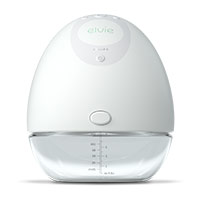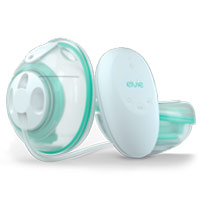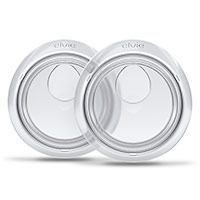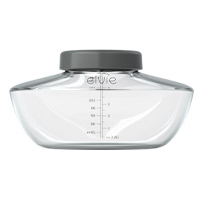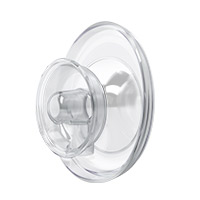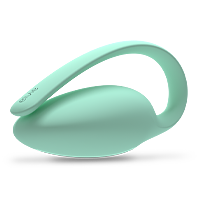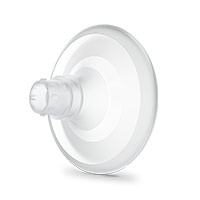The information provided has been reviewed by Beth Kitt, a seasoned NHS midwife with over 12 years of experience supporting women through childbirth. Beth currently serves as a professional practitioner affiliated with The Bump to Baby Chapter, and the content was reviewed on 03/07/24.
There’s a lot we’re not told about post-birth (uhm, why did no one ever mention the first postpartum poo?) and arguably even less we’re told about life in the weeks and months that follow a C-section. This is particularly confusing when you learn that around a third of all US births are delivered via C-section — why the radio silence?!
This issue is made all the more frustrating by the fact that many moms are given the false impression that cesarean birth is “the easy way out”. In reality, there’s really no easy way to give birth, and a C-section is a major surgery that requires significant recovery time. However, recovery is manageable with proper care and support, and while it's far from a walk in the park, it's also not as daunting as it may initially seem.
Let’s talk about C-section recovery
Having a C-section is major surgery — so you can anticipate a longer recovery time compared with having a vaginal birth — but the information about what to expect is a bit sparse. So we’ve come up with a sort of C-section cheat sheet to give you a comprehensive overview of the things you can expect from your recovery.
What to expect from your C-section scar
A C-section scar is usually a horizontal line just below your bikini line, roughly 4-8 inches in length. Some women may also have a vertical line from the belly button, depending on how the procedure is carried out.
The C-section scar will be red at first and will fade over time, and it's common to feel itching or tenderness around the scar during the first few weeks of recovery. You may also experience numbness or tingling, which is a normal result of the nerves being cut during the procedure. While these sensations can feel strange, they’re nothing out of the ordinary.
As time goes on, you should find that your C-section scar fades and becomes less noticeable. How much it fades will depend on your aftercare regime, the size of the scar, and your unique physiology.
How long will my C-section scar take to heal?
Your C-section scar will take roughly six to eight weeks to heal. However, problems during recovery can sometimes slow this down, so don’t take this as gospel! Don’t feel disappointed if you don’t spring out of bed on the first day of week seven and feel like a new woman, either. These are just guidelines and your recovery may be faster or slower, depending on a variety of factors.
C-section recovery — a timeline
Every mom is different, and while this makes it relatively impossible to provide an exact timeline of what to expect during your physical recovery journey, we’ve done our best to provide you with a rough guide below:
The first week: This is arguably the toughest part of your C-section recovery. During this stage, you’ll be monitored closely in the hospital, with a focus on rest, recovery, and pain management. Provided everything goes to plan, you may be discharged from the hospital within around 4-5 days. If your nurses are satisfied you’re healing correctly, then any non-dissolvable stitches or staples will be taken out after about six days.
Weeks 2-3: Two weeks have passed and you should be feeling a little more like yourself. You may begin to introduce some light exercises and walking into your recovery process.
Weeks 4-5: 5 weeks into your recovery, you should be able to manage most light-to-moderate physical activities without much discomfort, but it’s still important to take things easy!
Weeks 6-8: Generally, after around 8 weeks of recovery time most C-section patients are able to resume their normal day-to-day activities. This is the point at which you can start an aftercare regime for your scar with products like bio-oil. It’s also normal to have a postnatal check between six and eight weeks after your procedure to check your scar has healed properly.
Vaginal discharge after your C-section
If you’ve noticed that you’re producing a little more vaginal discharge and bleeding than usual post-op, this is just a natural part of the healing process. The discharge (known as lochia) is your body’s way of shedding the uterine lining.
Taking care of this extra discharge shouldn’t pose too much of a challenge, but remember to always opt for sanitary pads instead of tampons, as this will help avoid introducing bacteria into the healing wound. Lochia production may be quite heavy for the first few days after birth, but will gradually taper down over the next 2-6 weeks.
Keep in mind that lochia may also become heavier and brighter in color when you breastfeed — this is due to hormonal changes causing your womb to contract. This is also why many mothers experience a cramping feeling during breastfeeding, and this is more likely if you’ve had a baby before.
Tips for a quick(er) C-section recovery
Look after your wound
After your procedure, your midwife will recommend gentle daily cleaning of the wound with a mild soap, keeping an eye out for infection. Don’t take a bath or go swimming, or rub it dry — a quick pat will do. While you’re healing, it’s also best to wear loose-fitting clothes as this will prevent any irritation.
There’s nothing wrong with using pain medication, even when you’re breastfeeding, but always check with your doctor first. Acetaminophen and Advil are normally fine, but Aspirin and Codeine are not recommended. You could also try applying a heat pad to the area if you’re experiencing discomfort.
After 6 weeks, you can start massaging your scar with vitamin-e oil or bio-oil — this will promote healing and help the scar to fade. And besides this, it’s also a fool-proof way to snag a free massage from your partner!
Don’t push yourself
You should avoid driving or having sex for at least six weeks after a C-section to allow your scar to properly heal without complications, and hopefully lead to a faster recovery.
Telling a new mom to get some rest might sound absurd, but you really need to try and relax whenever possible. Make sure your partner or a loved one is doing any heavy lifting for you and try to keep everything you need within easy reach. You’re going to be camping out on the sofa or in bed for a few weeks, so get used to putting your feet up and just focus on getting better and bonding with your little one.
Focus on your nutrition
While you’re recovering from your C-section, you must fuel your body with a well-balanced, healthy diet. If you’re breastfeeding this is doubly important, as you are your baby’s primary source of nutrition!
Try to eat a variety of fruit and veg, and drink plenty of fluids — especially water — as this will help to boost your milk supply and prevent constipation. Carbohydrates and protein are crucial too, as these will contribute to your overall energy levels and your body’s ability to heal and regenerate effectively.
Perform some gentle exercises
When you’re feeling up to it (and when your doctor says it’s safe to do so) start taking some short walks and gentle exercise. This will help to prevent blood clots and constipation (which is a common problem after a C-section) along with the added benefit of promoting your mental wellbeing.
As you might expect, you should avoid any strenuous exercise until you've fully recovered. Take things super slowly and gradually increase the intensity and duration of your exercise routine as you recover. Pain is the enemy here, so if you experience any uncomfortable twinges or sharp sensations while exercising, stop immediately!
When to seek urgent medical advice
Contact your midwife or a GP straight away if you have any of the following symptoms after a cesarean:
A high temperature above 38°C (100.4°F)
Leaking urine or pain when peeing
Pus, foul-smelling discharge, or severe pain around the C-section site
Heavy vaginal bleeding
Difficulty breathing, coughing, and/or chest pain
Redness or swelling in either of your legs
Any sort of unusual pain in your breasts
These symptoms may be a sign of an infection or blood clot, which should be treated as soon as possible.
Elvie’s C-section FAQ
Is a C-section painful?
It’s completely normal to feel anxious about your c-section. Going under the knife is always a little nerve-wracking, but rest assured that you’ll receive anesthesia during the surgery to keep you comfortable and pain-free, along with suitable pain relief for your recovery.
Now, let’s address any stories that you may have heard regarding being awake during your procedure… While this is entirely possible, you won’t be able to feel anything from the waist down, nor will you be able to see the surgery take place either — not that we could imagine why anyone would want to! Whether you’re awake or not will depend on the type of anesthesia your surgeon deems most appropriate.
After the surgery, you may experience some discomfort or soreness at the incision site, but as with any kind of surgery, this is to be expected. The best way to tackle this? Stick to your healthcare provider’s advice and never be afraid to ask for pain medicine — looking after a newborn is difficult enough, so it’s really important to look after yourself too!!
How long does it take to recover from a C-section?
Recovery time after a C-section can vary depending on individual circumstances, but most women can leave the hospital after a few days.
The initial recovery period typically takes 4 to 6 weeks, during which time you should take it easy and avoid strenuous activity. Your healthcare provider will give you specific instructions for your recovery, but it’s important to take it slow and listen to your body. Be sure to follow up with your doctor for any post-operative appointments to ensure your recovery is progressing as it should.
How long until you can go swimming after a C-section?
Always wait until your incision has fully healed before going swimming after a C-section. This typically takes about 6 to 8 weeks, but as we mentioned earlier, this will vary from one mom to the next. While it’s true that swimming is classed as a relatively low-impact exercise, it can still put a strain on the incision site, which could cause complications if it hasn't fully healed.
Once you're cleared to swim, be sure to take it easy and listen to your body, avoiding any movements that cause discomfort or pain. We understand just how tempting it may be to take a dip but be patient, your body will thank you in the long run!
When can I drive after a C-section?
Most doctors will recommend waiting at least 2 weeks after your surgery before attempting to drive, but this timeframe can vary from one person to the next.
As a general rule, if you can comfortably wear a seatbelt and make any necessary movements (like turning the steering wheel or pressing the pedals) without any discomfort, you should be safe to drive.
How can I take care of myself emotionally during my recovery?
First off, don’t be afraid to ask for help! There’s no need to do everything on your own — reach out to friends, family, and medical professionals and learn to rely on your support network. It’s also crucial to make some time for yourself — try treating yourself to a new book, taking a relaxing bath or meditating. Admittedly this can be tricky with a newborn in the house, but even snatching five minutes outside for a quick stroll can make a world of difference.
Remember to be kind to yourself, too. It’s okay not to have everything figured out right away. Caring for a newborn is one of the toughest jobs in the world, and you’ll need time to adjust to your new routine. Try connecting with other new moms through local Facebook groups too — these online communities can be a fantastic place to forge new friendships and are often incredibly supportive environments.
What can I do to help speed up my recovery?
Recovering from a C-section takes time, but there are steps you can take to speed up the process. As you might expect, it’s the same sort of advice you’d hear for any recovery process.
Firstly, remember to take it easy and avoid strenuous activities for at least six weeks. Always follow your doctor's instructions carefully and try to stay hydrated and nourished with a balanced diet. Getting enough rest is important too (though this can be particularly tricky with a newborn!). Finally, and we can’t stress this one enough: if you need help, ask for it!
Above all — give yourself a break!
We mentioned at the beginning of this blog that a C-section is major surgery, and the effects of that shouldn’t be underestimated. Try and see this period of healing as a good thing, as it means you have no pressure to get out and about and can get some quality skin-to-skin contact time with your baby. There will be plenty of time for catch-ups and coffees outside the house once you’re fully healed, so just take it easy for now, and focus on getting your strength back.
References
March of Dimes. Data [Internet]. March of Dimes; 2024 Mar 7. Available from: https://www.marchofdimes.org/peristats/data?lev=1&obj=1®=99&slev=1&stop=355&top=8
Scarfade. Are Certain Skin Types More Prone to Scarring? [Internet]. Scarfade; 2024 Mar 7. Available from: https://www.scarfade.com/blog/certain-skin-types-prone-scarring/#:~:text=According%20to%20a%20study%20published,keloids%20and%20form%20excessive%20scars
The Bump. C-Section Scar [Internet]. The Bump; 2024 Mar 7. Available from: https://www.thebump.com/a/c-section-scar
Healthline. Vaginal Discharge [Internet]. Healthline; 2024 Mar 7. Available from: https://www.healthline.com/health/vaginal-discharge
Cleveland Clinic. Lochia [Internet]. Cleveland Clinic; 2024 Mar 7. Available from: https://my.clevelandclinic.org/health/symptoms/22485-lochia
NHS. Your body after birth [Internet]. National Health Service; 2024 Mar 7. Available from: https://www.nhs.uk/pregnancy/labour-and-birth/after-the-birth/your-body/#:~:text=You%20may%20notice%20the%20bleeding,on%20for%20a%20few%20weeks.
Healthline. C-Section Tips for Fast Recovery [Internet]. Healthline; 2024 Mar 7. Available from: https://www.healthline.com/health/pregnancy/c-section-tips-for-fast-recovery
FirstCry Parenting. Diet After C-Section Delivery: Foods to Eat and Avoid [Internet]. FirstCry; 2024 Mar 7. Available from: https://parenting.firstcry.com/articles/diet-after-c-section-delivery-foods-to-eat-and-avoid/
Healthline. Blood Clots After Birth [Internet]. Healthline; 2024 Mar 7. Available from: https://www.healthline.com/health/pregnancy/blood-clots-after-birth
Healthline. Postpartum Constipation [Internet]. Healthline; 2024 Mar 7. Available from: https://www.healthline.com/health/pregnancy/postpartum-constipation


